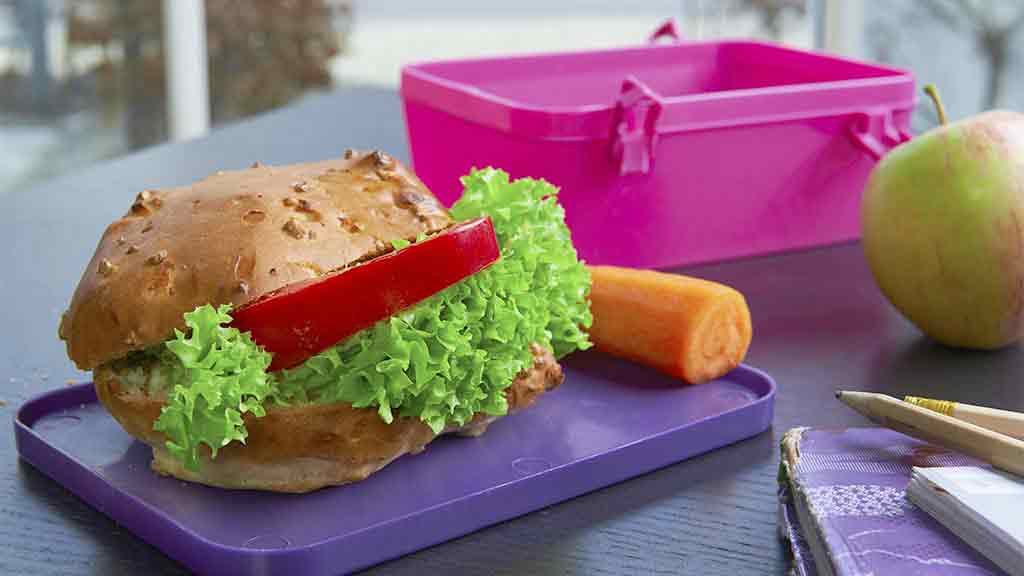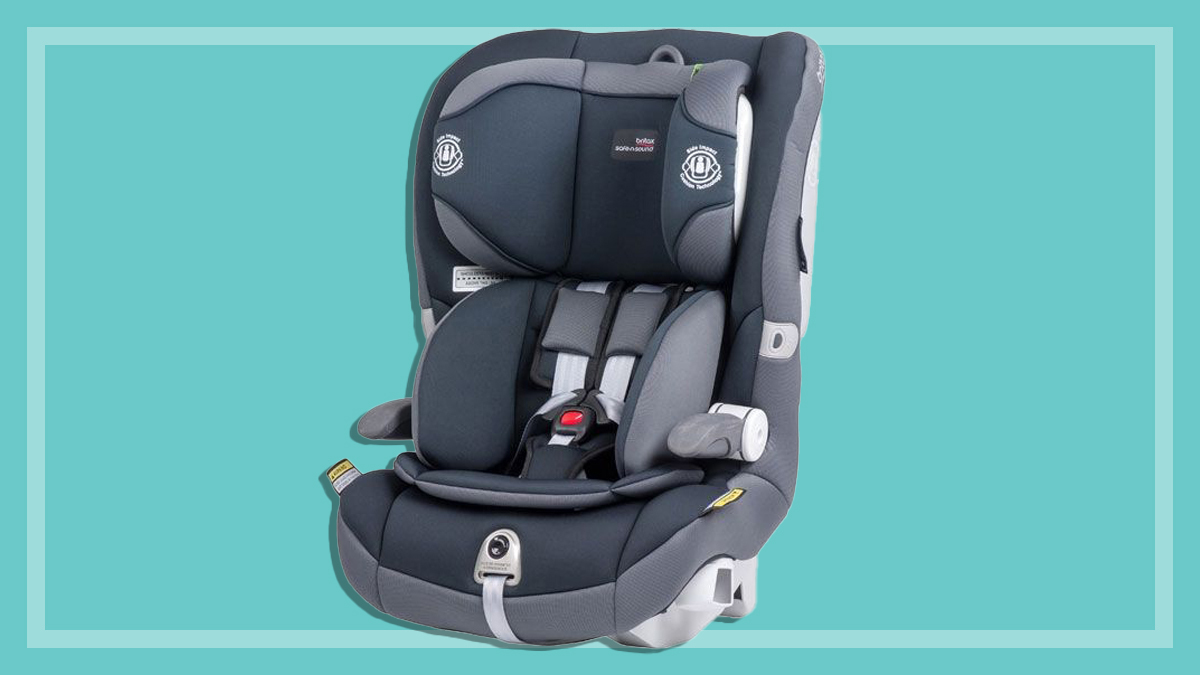Get our independent lab tests, expert reviews and honest advice.
Kids’ lunchbox snacks

In a perfect world all kids would have nutritionally sound lunchboxes. In reality, however, creating lunchboxes can be a process fraught with negotiation, compromise, foot stamping and even tears.
On this page:
- Cheese and crackers
- Cheese
- Savoury, crunchy snacks
- Dried fruit pieces, strips, straps and strings
- Fruit tubs and pouches
- Grain-based bars
- Sweet biscuits
- Better choices: the healthiest lunchbox snacks
- What are Health Star Ratings?
- The balanced lunchbox
While most parents want a balanced lunchbox, it has also become the norm to include some kind of processed treat – a muesli bar, a little bag of chips, some Tiny Teddies.
To help parents make better choices, we analysed more than 260 snacks and calculated their Health Star Rating. The results were underwhelming – only three items received the top rating:
5 stars out of 5
- The Laughing Cow La Vache Qui Rit Light
- Tuckers Onion & Cheddar Snack Bites
- Tuckers Chilli Snack Bites
More than half the products earned just two and a half stars or less, and only 21% earned four stars or more and most of these were fruit-based snacks like sultanas.
All nutritional comparisons are per 100g. Using the star ratings we’ve explored the choices for your child’s lunchbox, and found that there are better and worse choices within each category.
We also explain how Health Star Ratings work, and how to get a well-balanced lunchbox between discretionary and core foods.
Cheese and crackers
The presence of calcium in cheese may lure parents into thinking a small box of crackers and processed cheese dip is a healthy snack. However almost all the products we looked at in this category earned just one star, with only Laughing Cow Cheez Dippers gaining more. Many products didn’t even list calcium on the nutritional information panel (NIP) and although some products (Kraft, Uncle Tobys) did offer a reasonable amount of calcium, all products are very high in saturated fat, salt and kilojoules.
- 1.5 stars – The Laughing Cow Cheez Dippers (1230kJ, 9.5g sat fat)
Cheese

For a better dairy snack ditch the biscuits and cheese “dip” or “spread” and opt for a cheese stick or wedge. Choose low fat or “lite” such as Laughing Cow la Vache Qui Rit Light which was the only brand that earned five stars. Compare calcium levels and keep an eye out for sodium levels as they can vary widely between similar-looking products. Cheese products reviewed include:
- 5 stars out of 5 – Laughing Cow la Vache Qui Rit Light
- 4.5 stars out of 5 – Bega Stringers Original (700mg sodium)
- 2 stars out of 5 – Kraft Strip Cheese (1100mg sodium)
- 1 star out of 5 – Cowbell (Aldi) Cheese Rockets (1600mg sodium)
Savoury, crunchy snacks
Fat in flavour?
Be cautious when buying different flavours of these snacks in a multi-pack. Although Arnott’s Shapes Under the Sea Cheddar scores three and a half stars (medium saturated fat and 9g fibre), the variety pack with traditional flavours BBQ, Pizza, Cheddar and Cheese and Bacon Shapes is high in sat fat and only gets one and a half stars. Unlike the Shapes Under the Sea, it doesn’t list fibre content.
Rice rates slightly higher
Ranging from two to three stars, rice-based crackers like Rice Wheels are slightly better than chips, tending to have fewer kilojoules and low saturated fat. But they don’t have much fibre and are also fairly high in sodium.
Popcorn’s better when it comes to the crunch
For something crunchy a better choice is popcorn. The pre-packaged ready-to-eat variety generally falls between three and four stars, but Sunbites Lightly Salted with its 18.5g of fibre gets four and a half. It’s wise to double check the label to see if you’re really buying popcorn. Smith’s Air Popped Potato Snacks packaging looks very similar to Sunbite popcorn but is made with potato rather than corn and gets only two and half stars.
Wide-ranging results

Of the 36 salty, crunchy snacks we looked at, most ranged between a 1/2 star and two stars, with some better choices in the mix. The snacks we looked at included:
- 5 stars out of 5 – Tuckers Natural Snack Bites Onion & Cheddar (1650kJ, 3.8g sat fat, 420mg sodium, 20.1g fibre)
- 3.5 stars out of 5 – Smith Grain Waves Sour Cream and Chives (2000kJ, 2.5g sat fat, 389mg sodium, 6g fibre)
- 2.5 stars out of 5 – Ajitas Vege Chips Sweet & Sour (1890kJ, 1.6g sat fat, 670mg sodium, 5.4g fibre)
- 1.5 stars out of 5 – Mamee Noodle Snack (2040kJ, 5.3g sat fat, 750mg sodium, no listing for fibre)
- 0.5 star out of 5 – Top 20 Mixed Chips Cheezels (2220kJ, 14.9g sat fat, 1200mg sodium, 1g fibre)
Dried fruit pieces, strips, straps and strings
Watch out for sugar
Just because a package trumpets words like 65% fruit juice, “made with real fruit” or even 100% fruit doesn’t mean it can replicate the nutritional profile of real fruit. Usually made with a mixture of dried fruit and/or puree the sugar is concentrated to levels around 50% in strips, compared to a fresh apple which has about 12% sugar.
Extra additives
Uncle Toby’s Roll-Ups (which rated two and a half stars) may have “no artificial colours or flavours”, but this doesn’t mean they’re 100% fruit. Look at the ingredients list and you’ll see that maltodextrin is the largest ingredient, followed by about 30% concentrated fruit puree, plus sugar, starch, sunflower oil and vegetable gums.
And Nice&Natural Fruit Strings strawberry, raspberry and blueberry (two stars) is 62% reconstituted apple juice and 3% berries. The other 35% contains, among other things, glucose syrup and sugar, but also beef gelatine and bees wax!
Non-fruit ingredients can also up the kilojoule content compared to strips with more fruit, as in the snapshot below:
- 0.5 star out of 5 – Go Natural Berry Frugos (2037kJ)
- 4 stars out of 5 – Annies 100% fruit leather apricot and apple (1010kJ)
Some of these snacks have more fibre than others. Anything above 6g per 100g is considered high fibre, and good choices in the category are SVA 100% True Fruit or Golden Days Fruit Poles which have between 9g and 12g of fibre.
Dried fruit snacks can be a better option than most fruit sticks, although they still have significantly more sugar than fresh fruit. There can be big differences in the sugar content of different dried fruits, with sultanas having almost twice as much sugar as dried apricots:
- 3 stars out of 5 – generic sultanas (approx.)
- 4.5 stars out of 5 – Coles Sultana and Apricot
Fruit tubs and pouches
Tubs of fruit pieces are a handy sweet snack for kids and all the brands we looked at had at least three stars. However, the Goulburn Valley Diced Fruit range rates four stars because the fruit is in juice rather than jelly or syrup and had no added sugar.
Fruit pouches also averaged at three stars, but the products that came out with four stars like Whole Kids Frooshie, Rafferty’s Garden LB1 and SPC Crush Ups were almost entirely fruit compared with SPC Fruity Jellys with only 10% fruit.
Grain-based bars

There are two types of grain-based bars: those that position themselves as healthy with names such as “oats and honey”, “cereal bites” and “muesli bars”. And those that don’t try as hard to look healthy, using words like “puffs”, “bubble bars” and “choc rainbow”. But chances are they’ll all be sweet, because the manufacturers rely on sugars of various kinds – but usually ordinary sugar (sucrose), glucose or glucose syrup – to hold them together.
Grainy goodness?
Cereal and muesli bars aren’t all created equal when it comes to wholegrain content. The Grains & Legumes Nutrition Council says foods must contain a minimum of 8g of wholegrain per serve in order to make a claim about wholegrain content, but many bars don’t even contain that.

Sweet biscuits
Made with predominantly flour, sugar and oil, unsurprisingly there is little to recommend in these bikkies. Only one product earned more than two stars:
- 2.5 stars out of 5 – Coles Koala & Friends
Better choices: the healthiest lunchbox snacks
We found it hard to recommend many of the snacks we looked at, but some are better than others.
- Dried fruit is a better choice than other high salt, high saturated fat products but they are very high in sugar. For fruit strips look for more than 90% fruit and no added sugar.
- Buy diced fruit in juice rather than syrup.
- Avoid crackers and cheese, and go for less processed cheese sticks.
- Choose popcorn over chips and sweet biscuits.
- Look for muesli bars which have whole grains, fewer additives, lower sugar and higher fibre levels.
- Rice cakes are not particularly nutritious but are also low in fat and sugar and can be used as a base for healthy toppings like cheese, avocado or hummus.
What are Health Star Ratings?
The Health Star Rating system is a voluntary scheme developed by consumer, health and industry groups in a government-led process. Participating companies apply a rating between half a star and 5 stars to the front of food products, giving consumers at-a-glance information. The rating is computed using the Health Star Rating calculator and is based on the kilojoules, saturated fat, sugars, sodium, protein and fibre in 100 grams or mL of the product, and its fruit, vegetable, nut or legume content. The scheme also includes information about key nutrients.
We used the information available on the products reviewed to estimate star ratings. Companies aren’t required to declare fibre or the percentage of fruit, vegetables, nuts and legumes. Some products didn’t declare some or all of this information, and the actual rating may be higher with the full information considered.
Getting the balance right
Too many snacks?
The types of packaged snacks or treats on review may seem relatively benign, but the problem with regularly including these foods in lunchboxes is that they tend to be high in unhelpful nutrients like sugar and sodium and displace other healthier alternatives such as veggies or fruit.
A 2010 study of NSW schoolchildren found that while 96% of primary school kids ate their suggested one serve of fruit per day, only one-third of children in years 4 to 6 ate the suggested serves of vegetables each day.
“It’s unlikely that kids would be able to eat all their daily veggies in an evening meal, so adding a couple of serves to a lunchbox is a good start,” says nutritionist Mandy dos Santos from Little People Nutrition.
The Australian Guide to Healthy Eating advises limiting what it calls “discretionary foods” – the nutrient-poor and energy-dense foods. And, says dos Santos, parents should be trying to get kids to eat the suggested serves of core foods (lean meat and fish, dairy, grains, veggies and fruit) each day before offering non-core treats.
What is a serve of discretionary food?
A serve should contain no more than 600kJ and is roughly equivalent to:
- Savoury: 30g salty crackers or 2 slices of processed meats or 2 thin sausages or 1/3 (60g) commercial meat pie or 12 (60g) hot chips.
- Sweet: 40g of lollies or 25g chocolate or 1 small doughnut or 1 small slice of cake or muffin or 2–3 sweet biscuits or 60g honey (about 2 tablespoons) or 2 scoops of regular ice cream or a 375ml can of soft drink.
Using the 100g column of the nutritional panel is the best way to compare products at the supermarket. When looking at kids’ snacks it’s also important to check the serving size of individual packets. For discretionary foods or treats, the smaller the serving size the better.
The balanced lunchbox
“It’s unrealistic to expect parents will achieve a perfectly balanced lunchbox every time, but it is possible to make gradual improvements over time,” says dos Santos.
Protein
One serve of lean protein (meat, dairy, eggs, nuts, seeds) is 100g. But as kids only need 1½ to 2½ serves per day, they don’t need to have a whole serve at lunch, says dos Santos. For the lunchbox don’t forget plant proteins in the form of baked beans or dips made with legumes such as hummus, tofu and seeds. (Nuts are also great but many schools have a no-nut policy).
Grains
Found in bread, wraps, rice, muesli and crackers, grains provide fibre and carbohydrates for energy. Look for wholegrain with around 6g of fibre per serve, although 4g is still considered a good source of fibre. Choose wholegrain (or wholemeal with added grains) bread and aim for 4 to 5 serves a day for primary school kids.
A serve of grains is: 1 slice of bread, ½ cup cooked rice or noodles
Fruit
A source of fibre, vitamins and minerals, kids should have one or two pieces of fruit per day.
A serve of fruit is: 1 piece of medium sized-fruit, 1 cup cooked, canned or diced fruit, or 30g dried fruit. Half a cup (125mL) of 100% fruit juice is also considered one serve but should only be used occasionally.
Vegetables
Kids should be eating 1½ to 2 serves per day. For lunchboxes try cherry tomatoes or carrot, cucumber and celery sticks.
A serve of veggies is: ½ cup veggies, 1 cup raw leafy greens, 1 cup starchy veggies (sweet corn, for example).
Dairy
Dairy offers calcium for bones and teeth as well as filling protein. Primary-aged kids need 1½ to 3 serves a day. Choose low-fat dairy, and for yoghurt check the sugars – look for less than 12g per 100g.
A serve of dairy is: ¾ cup of yoghurt, 1 cup of low-fat milk, or 2 slices of cheese (40g).





